Abstract
The surface pH of human proximal jejunum was measured in biopsy samples and found to be more acid than the phosphate buffer in which they were incubated. The in vitro jejunal surface pH was 5.93 +/- 0.05 in control subjects and 6.19 +/- 0.09 in treated coeliac patients. A group of untreated coeliac patients with a surface pH of 6.56 +/- 0.14 had a significantly less acid surface pH compared to controls, as did a group of Crohn's patients with a surface pH of 6.21 +/- 0.04. These two groups with a significantly raised surface pH were subdivisible into 'high' and 'low'groups. Surface pH was found to remain low in the treated coeliac and control groups but became more acid over the incubation period reaching almost normal values in the Crohn's group and the untreated coelic initial surface pH. The raised surface pH in untreated coeliac disease and Crohn's disease would alter the amount of a weak acid available for non-ionic diffusion. Therefore the present results may help to explain the folate malabsorption known to occur in untreated coeliac disease and the frequently seen low serum folate levels in Crohn's disease.
Full text
PDF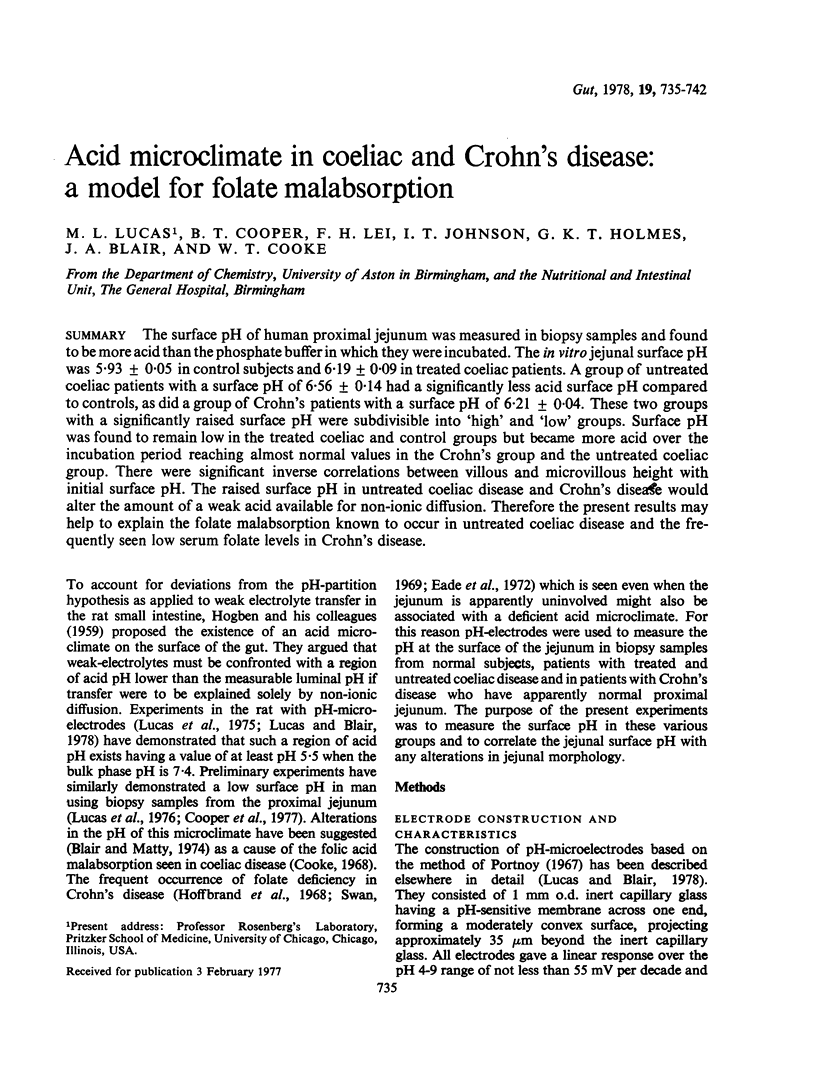
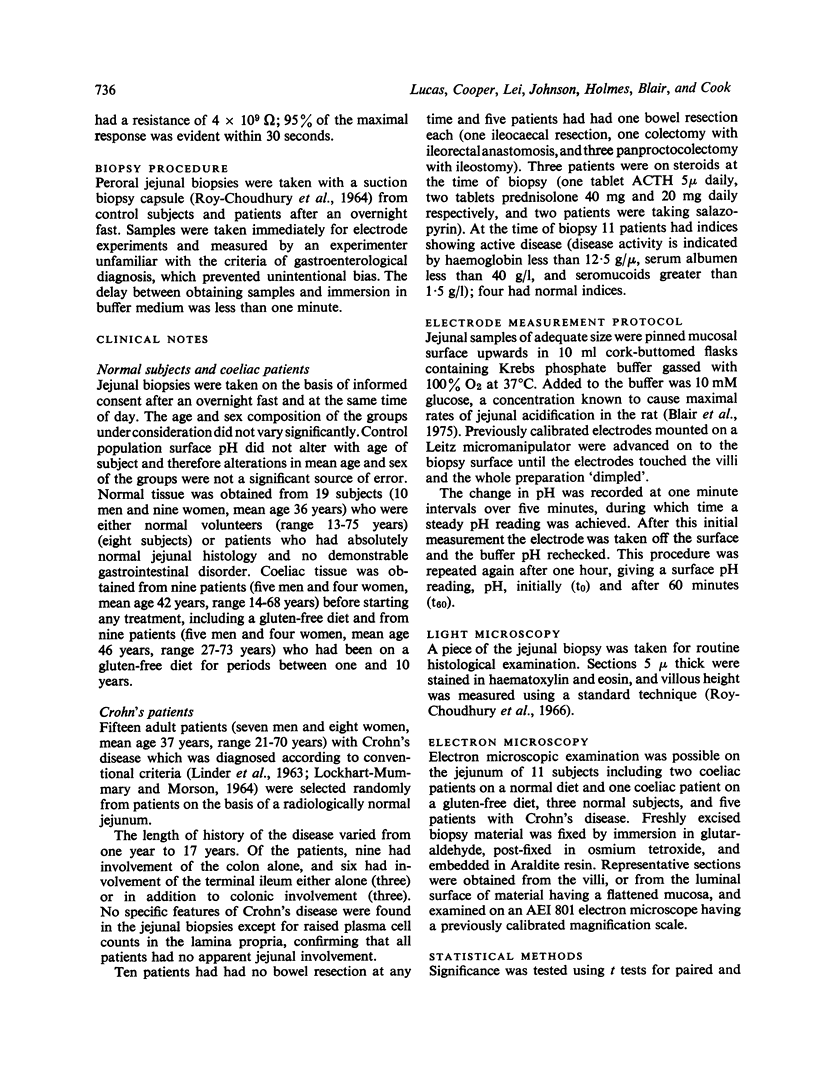
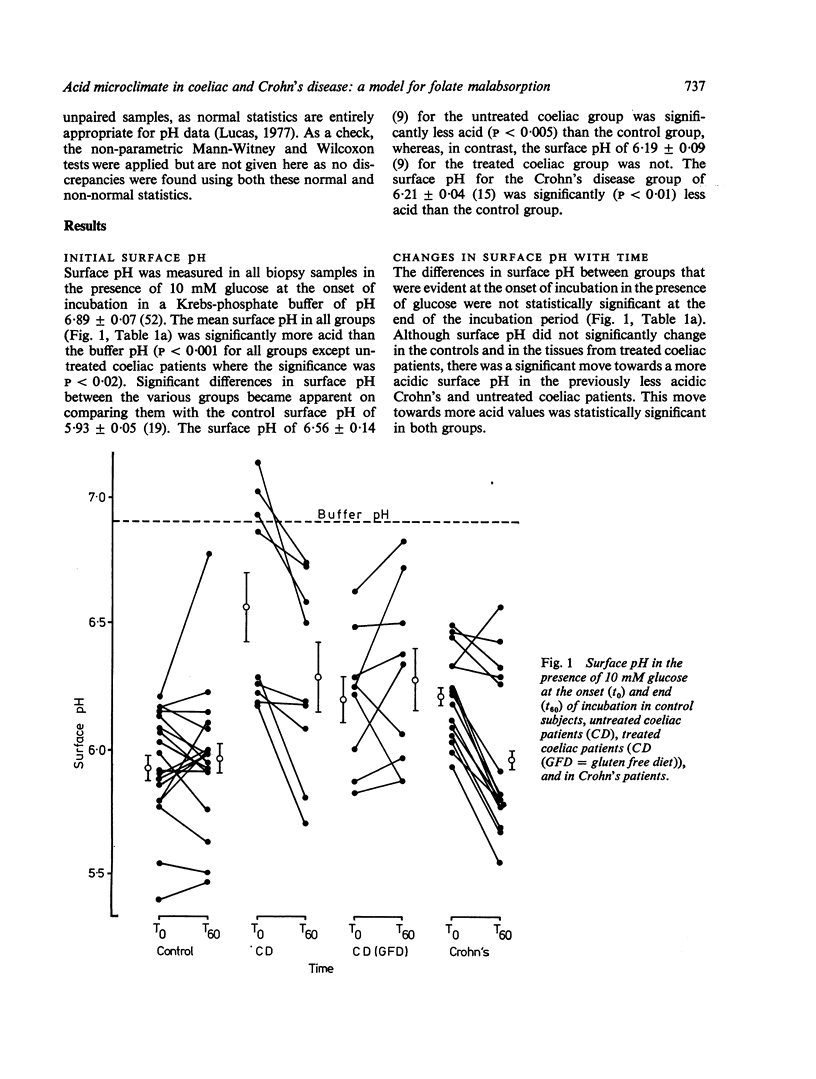
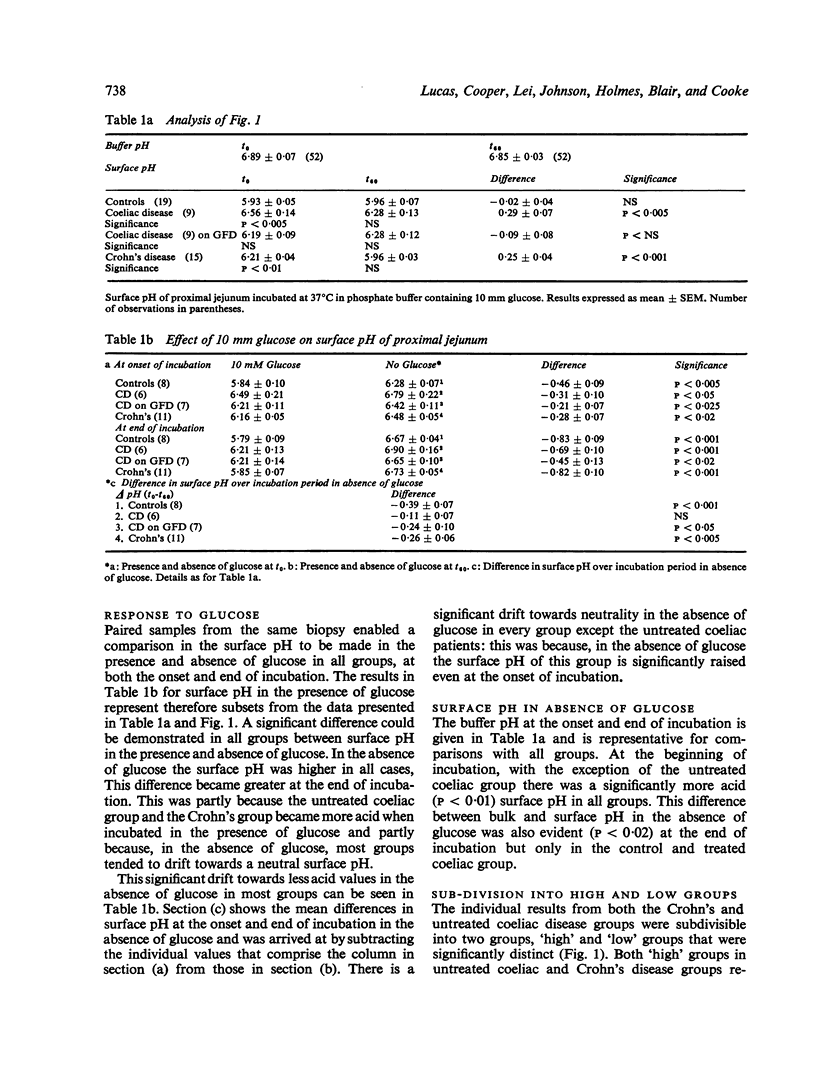
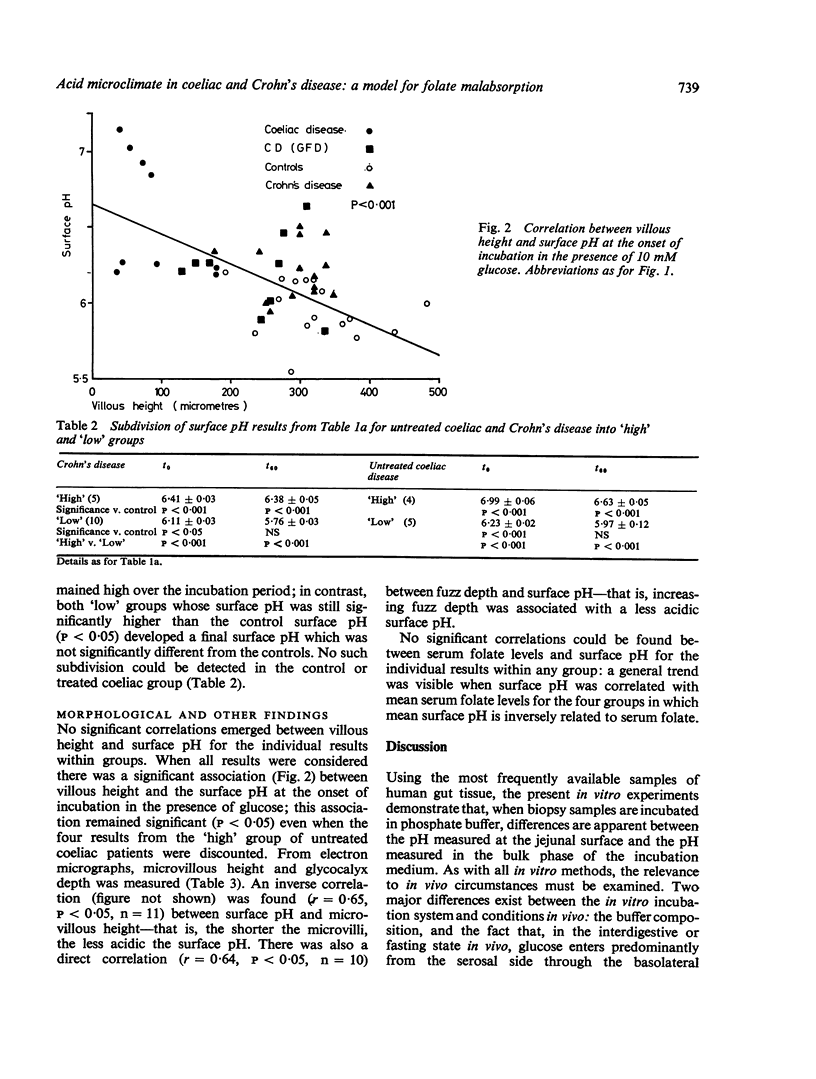
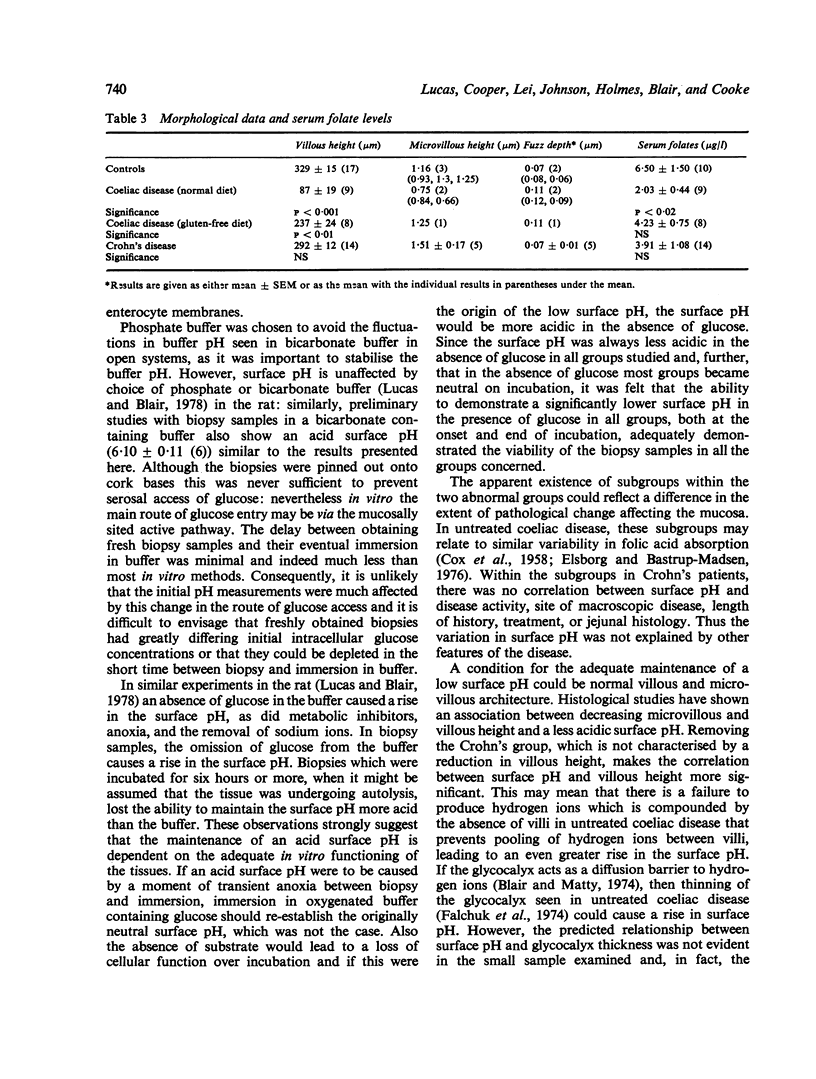
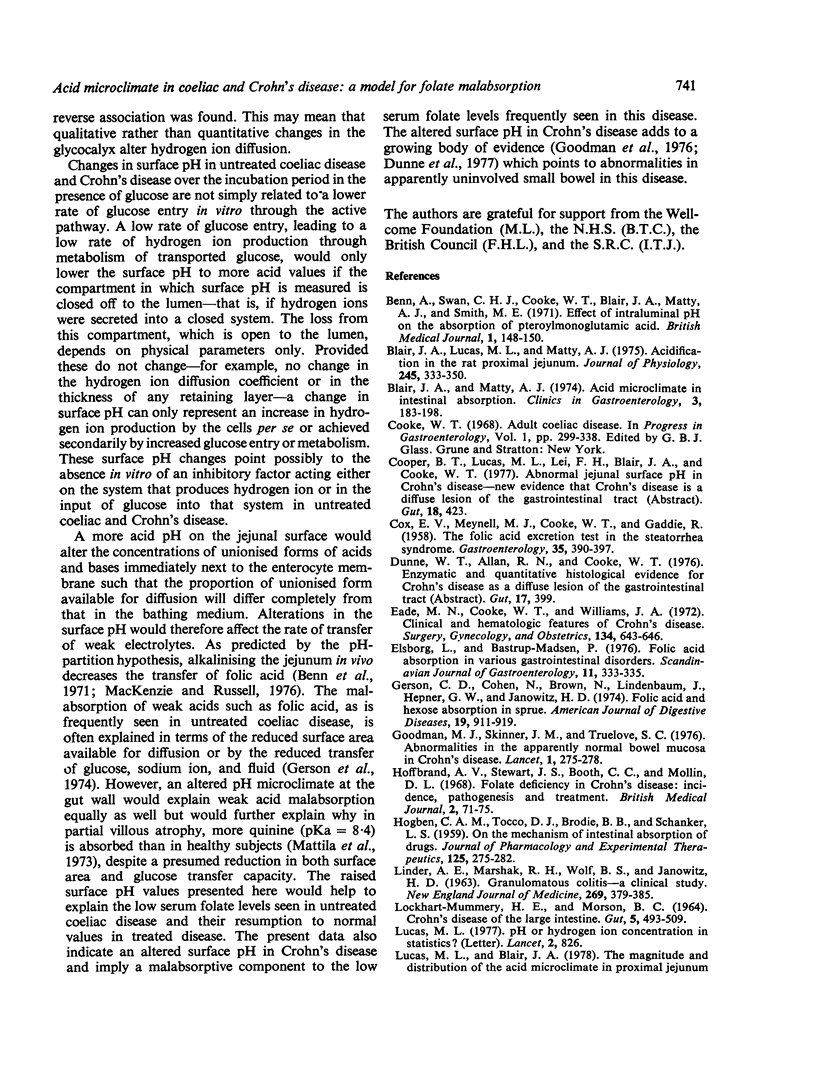
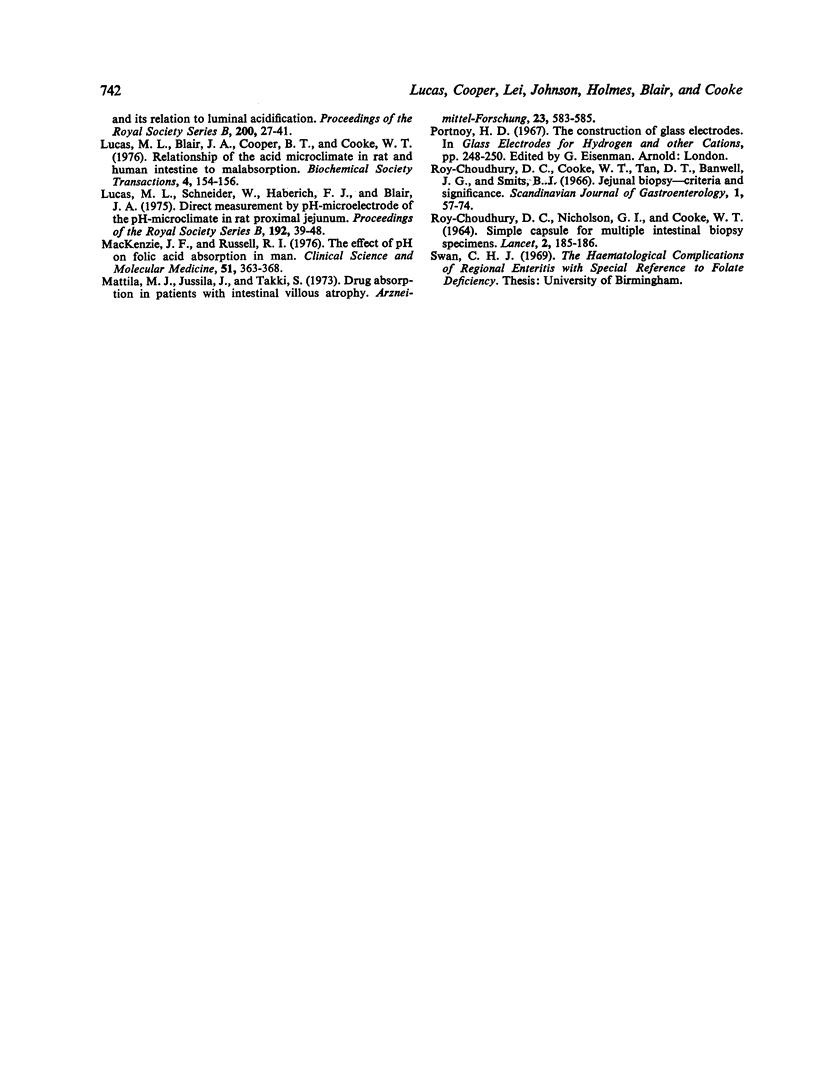
Selected References
These references are in PubMed. This may not be the complete list of references from this article.
- Benn A., Swan C. H., Cooke W. T., Blair J. A., Matty A. J., Smith M. E. Effect of intraluminal pH on the absorption of pteroylmonoglutamic acid. Br Med J. 1971 Jan 16;1(5741):148–150. doi: 10.1136/bmj.1.5741.148. [DOI] [PMC free article] [PubMed] [Google Scholar]
- Blair J. A., Lucas M. L., Matty A. J. Acidification in the rat proximal jejunum. J Physiol. 1975 Feb;245(2):333–350. doi: 10.1113/jphysiol.1975.sp010849. [DOI] [PMC free article] [PubMed] [Google Scholar]
- Blair J. A., Matty A. J. Acid microclimate in intestinal absorption. Clin Gastroenterol. 1974 Jan;3(1):183–197. [PubMed] [Google Scholar]
- CHOUDHURY D. C., NICHOLSON G. I., COOKE W. T. SIMPLE CAPSULE FOR MULTIPLE INTESTINAL BIOPSY SPECIMENS. Lancet. 1964 Jul 25;2(7352):185–186. doi: 10.1016/s0140-6736(64)90238-7. [DOI] [PubMed] [Google Scholar]
- COX E. V., MEYNELL M. J., COOKE W. T., GADDIE R. The folic acid excretion test in the steatorrhea syndrome. Gastroenterology. 1958 Oct;35(4):390–397. [PubMed] [Google Scholar]
- Dunne W. T., Allan R., Cooke W. T. Proceedings: Enzymatic and quantitative histological evidence for Crohn's disease as a diffuse lesion of the gastrointestinal tract. Gut. 1976 May;17(5):399–399. [PubMed] [Google Scholar]
- Eade M. N., Cooke W. T., Williams J. A. Clinical and hematologic features of Crohn's disease. Surg Gynecol Obstet. 1972 Apr;134(4):643–646. [PubMed] [Google Scholar]
- Elsborg L., Bastrup-Madsen P. Folic acid absorption in various gastrointestinal disorders. Scand J Gastroenterol. 1976;11(3):333–335. [PubMed] [Google Scholar]
- Gerson C. D., Cohen N., Brown N., Lindenbaum J., Hepner G. W., Janowitz H. D. Folic acid and hexose absorption in sprue. Am J Dig Dis. 1974 Oct;19(10):911–919. doi: 10.1007/BF01076214. [DOI] [PubMed] [Google Scholar]
- Goodman M. J., Skinner J. M., Truelove S. C. Abnormalities in the apparently normal bowel mucosa in Crohn's disease. Lancet. 1976 Feb 7;1(7954):275–278. doi: 10.1016/s0140-6736(76)91404-5. [DOI] [PubMed] [Google Scholar]
- HOGBEN C. A., TOCCO D. J., BRODIE B. B., SCHANKER L. S. On the mechanism of intestinal absorption of drugs. J Pharmacol Exp Ther. 1959 Apr;125(4):275–282. [PubMed] [Google Scholar]
- Hoffbrand A. V., Stewart J. S., Booth C. C., Mollin D. L. Folate deficiency in Crohn's disease: incidence, pathogenesis, and treatment. Br Med J. 1968 Apr 13;2(5597):71–75. doi: 10.1136/bmj.2.5597.71. [DOI] [PMC free article] [PubMed] [Google Scholar]
- LOCKHART-MUMMERY H. E., MORSON B. C. CROHN'S DISEASE OF THE LARGE INTESTINE. Gut. 1964 Dec;5:493–509. doi: 10.1136/gut.5.6.493. [DOI] [PMC free article] [PubMed] [Google Scholar]
- Lucas M. L., Blair J. A., Cooper B. T., Cooke W. T. Relationship of the acid micro-climate in rat and human intestine to malabsorption. Biochem Soc Trans. 1976;4(1):154–156. doi: 10.1042/bst0040154. [DOI] [PubMed] [Google Scholar]
- Lucas M. L., Blair J. A. The magnitude and distribution of the acid microclimate in proximal jejunum and its relation to luminal acidification. Proc R Soc Lond B Biol Sci. 1978 Jan 24;200(1138):27–41. doi: 10.1098/rspb.1978.0003. [DOI] [PubMed] [Google Scholar]
- Lucas M. L., Schneider W., Haberich F. J., Blair J. A. Direct measurement by pH-microelectrode of the pH microclimate in rat proximal jejunum. Proc R Soc Lond B Biol Sci. 1975 Dec 31;192(1106):39–48. doi: 10.1098/rspb.1975.0150. [DOI] [PubMed] [Google Scholar]
- Lucas M. pH or hydrogen-ion concentration in statistics? Lancet. 1977 Oct 15;2(8042):826–826. doi: 10.1016/s0140-6736(77)90763-2. [DOI] [PubMed] [Google Scholar]
- MacKenzie J. F., Russell R. I. The effect of pH on folic acid absorption in man. Clin Sci Mol Med. 1976 Oct;51(4):363–368. doi: 10.1042/cs0510363. [DOI] [PubMed] [Google Scholar]
- Mattila M. J., Jussila J., Takki S. Drug absorption in patients with intestinal villous atrophy. Arzneimittelforschung. 1973 Apr;23(4):583–585. [PubMed] [Google Scholar]
- Roy-Choudhury D., Cooke W. T., Tan D. T., Banwell J. G., Smits B. J. Jejunal biopsy: criteria and significance. Scand J Gastroenterol. 1966;1(1):57–74. doi: 10.1080/00365521.1966.11800614. [DOI] [PubMed] [Google Scholar]


